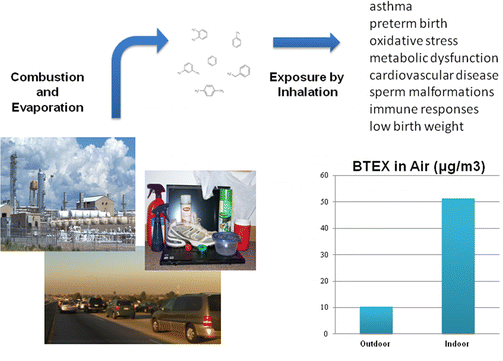NYS to Make Fracking Ban Official, Not Permanent
May 2, 2015Evaluating a Groundwater Supply Contamination Incident Attributed to Marcellus Shale Gas Development
May 12, 2015by Ashley L. Bolden, Carol F. Kwiatkowski and Theo Colborn, Environmental Science and Technology, April 15, 2015
From TEDX: Indicates a need to change how chemicals present at low concentrations are assessed and regulated.
Abstract

Benzene, toluene, ethylbenzene, and xylene (BTEX) are retrieved during fossil fuel extraction and used as solvents in consumer and industrial products, as gasoline additives, and as intermediates in the synthesis of organic compounds for many consumer products. Emissions from the combustion of gasoline and diesel fuels are the largest contributors to atmospheric BTEX concentrations. However, levels indoors (where people spend greater than 83% of their time) can be many times greater than outdoors. In this review we identified epidemiological studies assessing the noncancer health impacts of ambient level BTEX exposure (i.e., nonoccupational) and discussed how the health conditions may be hormonally mediated. Health effects significantly associated with ambient level exposure included sperm abnormalities, reduced fetal growth, cardiovascular disease, respiratory dysfunction, asthma, sensitization to common antigens, and more. Several hormones including estrogens, androgens, glucocorticoids, insulin, and serotonin may be involved in these health outcomes. This analysis suggests that all four chemicals may have endocrine disrupting properties at exposure levels below reference concentrations (i.e., safe levels) issued by the U.S. Environmental Protection Agency. These data should be considered when evaluating the use of BTEX in consumer and industrial products and indicates a need to change how chemicals present at low concentrations are assessed and regulated.
Download the full study as a pdf
Study Findings and Implications by The Endocrine Disruption Exchange (TEDX)
Hear the lead author discuss this study, May 20, 2015



